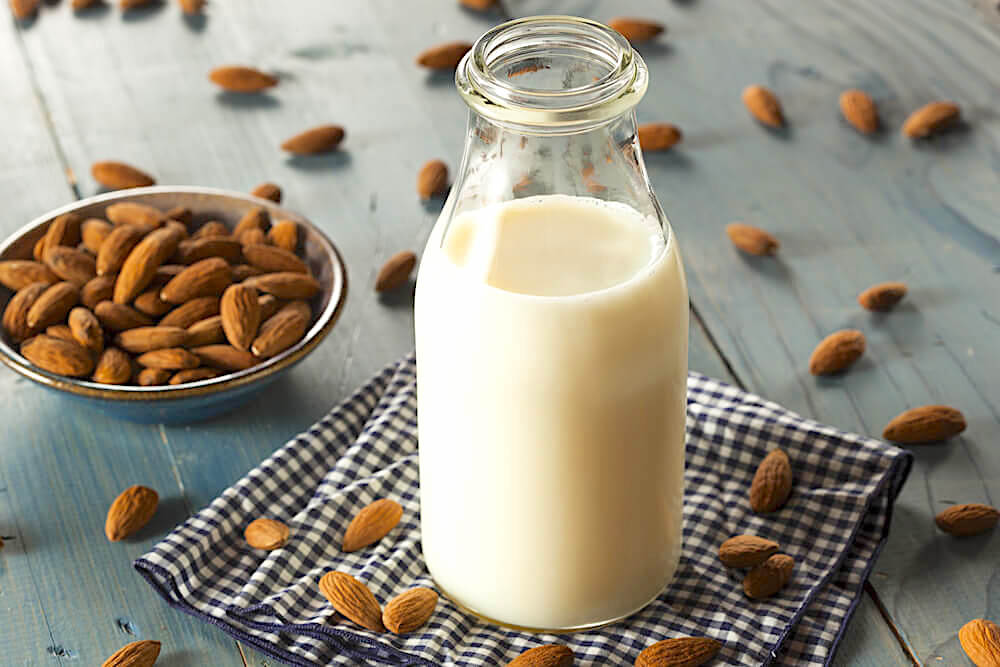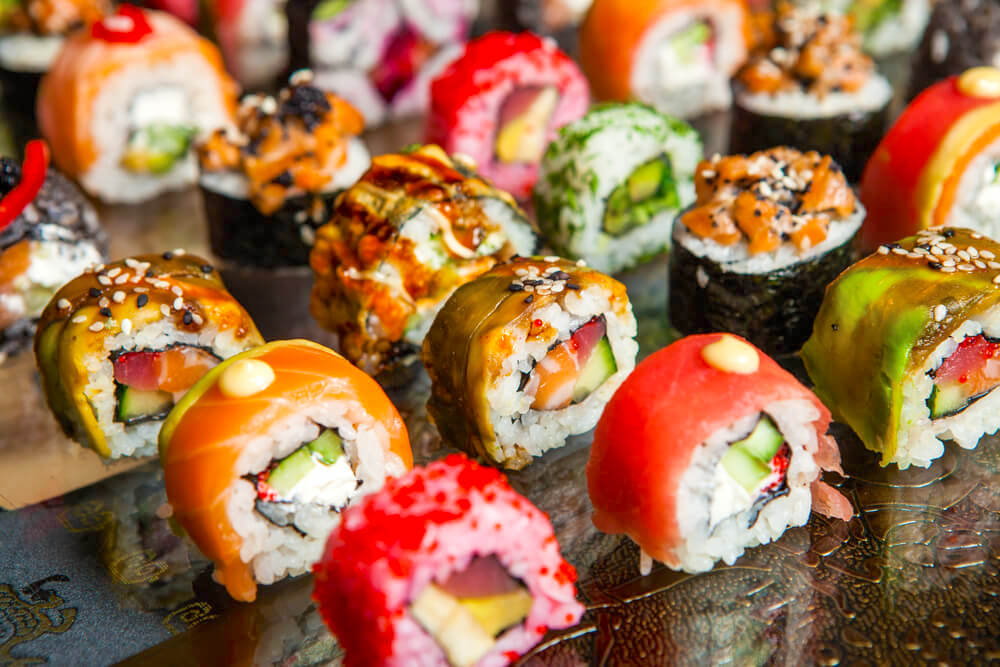Have you been trying to improve your diet and eat in a healthier way?
This can sometimes seem quite easy, thanks to the wide range of foods available that are touted as being healthy.
However, while you may think that you are doing your body some good by consuming everything from agave nectar to store-bought green juices to coconut oil, you could actually be causing more damage than you realize…
Store-Bought Green Juices
Green juices have exploded in popularity lately, and for good reason too…
Juicing fruits and vegetables means that you are extracting the fiber, which means that, when you consume them, your body is able to absorb and make use of the nutrients within them at a much more efficient rate. This then gives you the fantastic surge of energy that green juices are so famous for.
There are so many green juices available in stores these days, and while some of them may be quite healthy, the majority are likely not.
So, how do you go about making a decision?
Many people think a juice that comes in a vivid shade of green is definitely going to be healthy, but it actually only takes a tiny amount of spinach, or another green, to achieve this color. The rest of the juice will tend to mainly consist of fruits, rather than vegetables, as this not only helps the juice to go further, but it also makes the taste one that will appeal to a wider audience.
The only way to decipher whether or not a store-bought green juice is good for you is by taking a look at the ingredients list. Not only do you need to be looking at which fruits and vegetables have been used, but make sure you also examine how much sugar the juice contains.
You will find that many juices out there are actually packed with sugar, with some even containing just as much as a fizzy drink.
Of course, the best way to enjoy a green juice without worrying about whether or not it is bad for you is by making your own.

This is actually easy to do, and can be made in larger batches so that you have some juice ready for whenever you need a kick of energy.
Coconut Oil
Around 72% of Americans think that coconut oil is a healthy food, but recent reports from the American Heart Association dispute this.
While coconut oil does contain some good fats, around 82% of the fat in coconut oil is saturated, which is a higher amount than everything from butter to pork lard to beef fat.
Cutting back on the amount of saturated fat in the modern diet is something that has been advised for a while now, and while coconut oil can have its benefits, it should not be consumed in copious amounts, which is what many do.
Coconut oil is also quite calorie-dense, with just one tablespoon of it containing around 120 calories.
While consuming small amounts of coconut oil is no doubt good for you, you would be best off sticking to healthier oils for daily use, such as extra virgin olive oil.
Of course, do not forget that, when used topically, coconut oil has some fantastic antifungal and anti-bacterial properties.
Agave Nectar
If you have been looking into sugar substitutes, you have likely already come across agave nectar quite a few times, and maybe even used it yourself.
Agave nectar comes from the same plant that tequila is made from, and has a syrup-like consistency, making it a convenient sweetener to use.
But is it actually better than sugar?
Well, agave nectar does have a low-glycemic index, meaning that it does not cause sharp fluctuations in blood sugar levels.
However, this only means that it does not contain glucose…
So what about fructose?
Agave is actually packed with fructose, which is the same substance that you would find in unhealthy high fructose corn syrup. There are a number of studies out there linking a diet high in fructose with a range of different medical issues, including heart disease.
While agave nectar may be a better option than other artificial sweeteners, it is still a food that you should really try not to consume too much of.
Gluten-Free Foods
For those who have celiac disease, or a gluten sensitivity, a gluten-free diet is essential.
However, for everyone else, a gluten-free diet can actually be detrimental to your health.
How?
In a few different ways:
- Gluten-free foods usually contain less fiber, which is necessary for bowel health
- When gluten is removed from a food, it loses its elasticity, so other refined ingredients, such as stabilizing gums, are added in instead
- Gluten-free foods often contain more calories, fat and carbohydrates than their standard alternatives

With so many different celebrities deciding to adopt a gluten-free diet, it seems to have become the new dietary trend, even though there is really no evidence that points to gluten being detrimental for health unless you have celiac disease.
Pink Himalayan Salt
Pink Himalayan salt is another ingredient that has become quite trendy in recent years, and its distinctive pink hue not only looks pretty on kitchen shelves, but also contains small amounts of minerals. These include calcium, potassium, iron and magnesium.
However, have you actually looked into how much of these minerals are in the salt?
The answer is close to zero. While there are minerals present, these are in such tiny amounts that they really will not be making much of a difference at all to your health.
Many people use more Himalayan salt than regular salt, thinking that, because of the minerals, it is better for them. But, it is still just a salt, meaning that you need to be cautious with how much you use.
Low-Fat and Skimmed Milk
If you have been trying to watch your weight, then making the decision between a full-fat and a low-fat milk can seem like a no-brainer.
However, the low-fat version is actually something that you should avoid…
Why?
Well, to begin with, while whole milk does have more fats in it, many of these are good fats, and do everything from improving your metabolism to helping keep you feeling full.
Milk also contains a number of fat-soluble vitamins, such as vitamins A, D, E and K. Without the fat, skimmed milk will have far less of these vitamins.
If that wasn’t enough to convince you…
When skimmed milk is made, its consistency is nothing at all like whole milk. In order to make skimmed milk more palatable, the producers add in powdered milk, as this helps to improve its texture.
Why does this matter?
Because this process actually results in the milk containing oxidized cholesterol, which causes even more damage to your arteries than regular cholesterol.
There are many studies out there that point to the various reasons for which low-fat milk should be avoided, for both adults as well as children.
Store-Bought Almond Milk
One of the reasons that plant-based milks have become so popular recently is because their shelf life tends to be much longer than dairy milks.
But have you ever wondered why this is?
The answer is because the majority of plant-based milks are packed with preservatives, as well as a range of sugars, thickeners and stabilizers, as they need these to obtain their milky texture.
When it comes to almond milk in particular…
One of the most common additives that you will find in store-bought versions is carrageenan.
Have you ever heard of this before?
It is a common preservative, which has long since been linked to everything from intestinal inflammation to cancer.
You will also find a range of vegetable oils in almond milk, many of which do not actually benefit the body, as well as added vitamins and minerals that come in a form that the body cannot easily absorb and make use of.
For those who think that they are getting plenty of almonds in their milk, think again…
Studies have shown that many brands of almond milk out there contain no more than 2% almonds.
The milk itself is also produced in a similar way to coffee, meaning that water is strained through ground beans, or, in this case, nuts. This means that the majority of the almond milk you buy is just water, and also does not have much of a nutritional value.
Still need a dairy-free milk?
Try making your own! You can use just about any nut or seed that you can get your hands on, or even a mix of them, such as:
- Almonds
- Coconut
- Sesame seeds
- Pecan nuts
- Walnuts
- Cashew nuts
- Hemp seeds

You can then either store it in the fridge for a few days, or freeze it in batches so that you always have some to hand.
Trail Mix
Trail mix is often marketed as a healthy, on-the-go snack. While this is true in some cases, the majority of pre-made trail mixes out there are usually filled with calories, and contain ingredients that are actually rather unhealthy.
Does your trail mix contain just nuts, some dried fruit and some dark chocolate?
If so, you are on to a winner!
However, the majority of brands out there contain ingredients such as yogurt or chocolate covered raisins, sesame sticks, candy, and fried banana chips, all of which are packed with sugars, fats and refined carbohydrates.
Just like when it comes to plant-based milks, your best option is to make your own trail mix. This is so simple to do, and you will actually find that you end up saving money, and can also tailor your trail mix to suit your own personal tastes.
Multivitamins
Research has shown that around half of American adults take daily vitamin supplements, but there are actually no studies at all out there that justify this.
In fact, the over-consumption of certain vitamins can actually lead to an increased risk of cancer.
Of course, from vitamin A to vitamin C to vitamin E, your body requires vitamins in order to properly function, but studies have shown that these vitamins are consumed in adequate quantity in the average diet.
If you are taking multivitamins or another form of vitamin supplement, it may be worth looking into this in more detail, so that you can decide for yourself whether or not they are actually benefiting your body.
Sushi
High in protein and low in carbohydrates, sushi is definitely one of the more healthier meal options out there.
However, the problem here lies in the fish that is used…
Most of the time, you will find fish such as tuna, sea bass and swordfish used in your favorite sushi dishes.

Wondering what is wrong with these?
They are known for being some of the worst fish to eat when it comes to mercury contamination. This is something that cannot be detected on a fish in terms of sight, smell or taste, and also cannot be destroyed by cooking or preparing the fish in a certain way.
Here are some of the fish types that you should avoid:
- Tuna, which is the most common source of mercury exposure in the USA
- Mackerel
- Seabass
- Yellowtail
Instead, opt for smaller fish varieties, such as sardines, scallops and anchovies, as these are much lower down on the food chain in the sea, and therefore contain less mercury.
Worried that you may have already consumed high amounts of mercury?
Fortunately, you can have this tested, through a blood test, with your physician. If you are a woman who is trying to get pregnant, you may want to wait on this until your mercury levels have dropped back down to a safer amount.
For many people, a healthy diet can be difficult to stick to, especially when foods that you think are healthy are actually not. The best way around this is by being diligent with every single ingredient that you put into your body, making sure to fully scrutinize the ingredients list of every pre-made product that you purchase.




